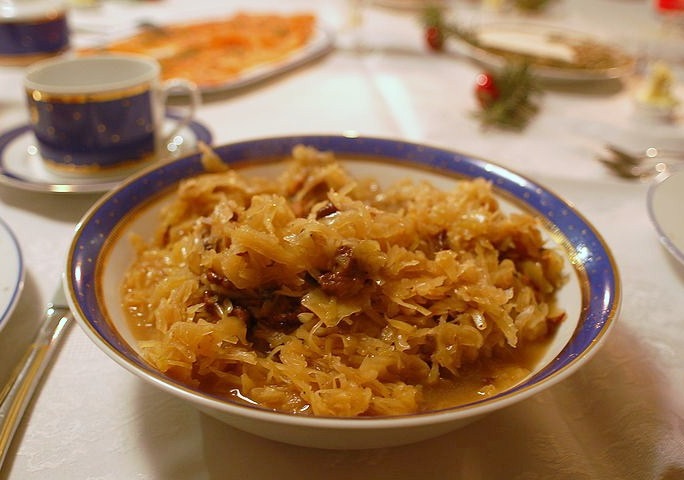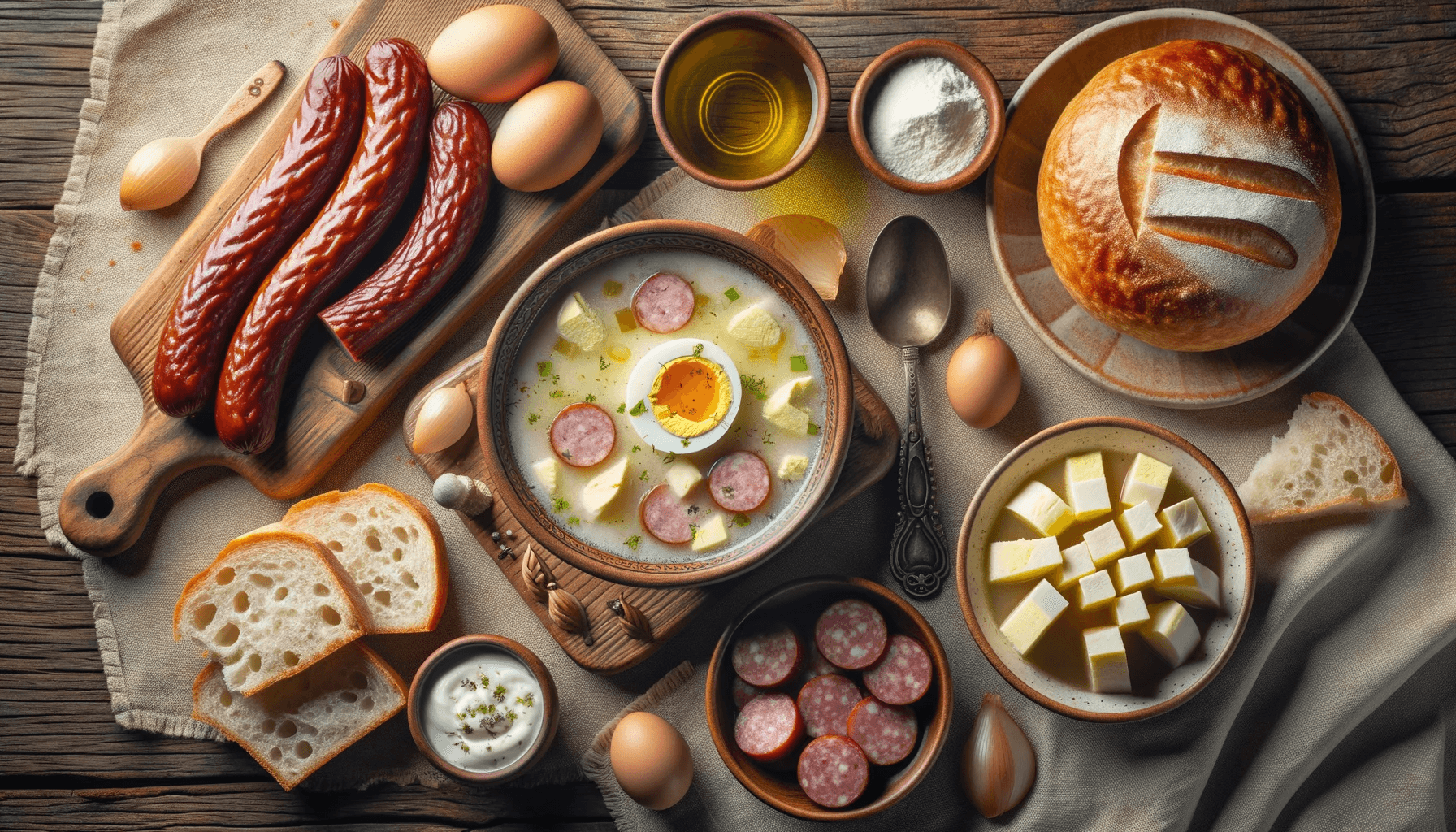The Polish cuisine was influenced by many historical events. Thanks to the diversity of cultures that passed through the territory of the Polish-Lithuanian Commonwealth over the years, our plates still have, among others, Tatar-Turkish, Ruthenian, German, and Jewish flavors. As for the dominant dishes, Polish cuisine offers many fried and heavily seasoned dishes. They often contain pickled additions, which are very popular in Poland.
Polish cuisine is also strongly regionalized - practically every province has its characteristic dishes or different variations of those that are widely known.
Below are the dishes that are popular throughout the country, so you can try them in Krakow, Warsaw, or Gdansk.
Pierogi
Pierogi are the most popular dish in Poland, although not necessarily of Polish origin. There is no certainty about their original source. Although pierogi are popular in Eastern Europe, similar products also appear in Italian cuisine (ravioli), Spanish cuisine (empanadas), Turkish cuisine (manti). There are also many other variations on the idea of stuffing wrapped in dough. One theory suggests that pierogi came to Europe from China together with Marco Polo, who discovered them on the Silk Road. According to legend, they came to Poland thanks to Jacek Odrowąż, a Polish clergyman living in the 13th century, who was fascinated by their taste during a visit to Kiev.
In any case, pierogi have been present in Polish cuisine for a long time, and in the number of their flavors, we have outdone ourselves - the most popular version is the so-called Russian dumplings: with cottage cheese, onion, and boiled potatoes. There are also dumplings with meat, with sauerkraut and mushrooms (a Christmas variant) or sweet ones with fruit, usually strawberries or blueberries. If something is edible and suitable for stuffing, someone has probably already made pierogi out of it.
Żurek, borscht, broth
Żurek is a traditional Polish soup thickened with rye flour sourdough. It is usually served with sausage and egg. In the representative version, it is often served in a hollowed-out loaf of bread. Żurek has a sour taste with a distinct smoky note. This soup is traditionally served during Easter when blessed eggs and sausage are used to prepare it, and the whole thing is seasoned with horseradish.
Borscht is a soup made from beets, popular in various countries of Central and Eastern Europe. In Poland, it is traditionally served at the beginning of the Christmas Eve supper. In a creamy version with sour cream, borscht is served with an egg. It usually has a sweet and sour taste, although it depends on the method of preparation. The addition of horseradish and pepper gives it a spicy taste. Borscht is often served with a croquette (breaded pancake with filling), but also with dumplings (similar to Italian tortellini) inside, and even with potatoes, a hard-boiled egg, or white beans.
Broth is a dish whose origin is difficult to determine - just like in the case of pierogi. It can be said that due to the way it is prepared (cooking meat), it is a dish that is consumed in various forms all over the world. Polish broth is a meat broth, usually made from chicken but also from other types of poultry, beef or lamb (according to many housewives, the secret to good broth is adding several types of meat) and vegetables: carrots, celery, parsley, roasted onions. Broth is usually served with thin noodlescame to Poland thanks to Jacek Odrowąż, a Polish clergyman who lived in the 13th century and fell in love with their taste during a visit to Kiev. Regardless of their origin, pierogi have been present in Polish cuisine for a long time, and we have surpassed ourselves in the number of their flavors - the most popular version is the so-called "ruskie" pierogi with white cheese, onion, and boiled potatoes. There are also pierogi with meat, with sauerkraut and mushrooms (a Christmas Eve variant), or sweet pierogi with fruits, usually with strawberries or blueberries. If something is edible and suitable for filling, someone has probably already made pierogi out of it.
Kotlet schabowy

It couldn't be missing from this list, especially since we already mentioned chicken soup. This combination of dishes makes up a typical Polish dinner. Although the average Joe might think that pork cutlet has always been a staple of Polish cuisine, the dish actually made its debut in 1860 in a cookbook titled "365 Dinners for Five Zlotys." The name isn't coincidental either. Pork was considered a meat for lower social classes at the time, and the simplicity of preparation – coating the cutlet in egg and breadcrumbs and frying it in oil – made it an accessible dish for everyone. The origin of the dish isn't Polish, but rather, likely Germanic. Nonetheless, today it's considered one of the most Polish dishes.
Like chicken soup, pork cutlet gained popularity during the Communist period in Poland, when it was a common dish served during formal Sunday dinners. Pork cutlet is usually served with potatoes and salad or pickled cabbage, beets, or sautéed cabbage – depending on preference. More extravagant variations of pork cutlet might include serving it baked with cheese or mushrooms. A popular variation of pork cutlet, often a signature dish of Polish housewives, is our own twist on chicken "de volaille." This is a type of hybrid of that dish and pork cutlet, where chicken breast replaces pork, and instead of butter inside, there's yellow cheese, pickled cucumber, sometimes pickled peppers, or another ingredient.
Bigos

Bigos is a traditional Polish dish, also found in Lithuania and Belarus. It is a stew made of sauerkraut and meat, without which no traditional Polish feast can take place. Although there is a dispute among bigos fans whether it is a soup or a main course, connoisseurs point out that a good bigos should have a consistency that allows you to spoon it. This dish is usually eaten with a slice of bread, but it can also be served in a hollowed-out loaf. In this case, you eat the contents first and then the bread bowl.
Racuchy
Racuchy is a traditional Polish dish - sweet pancakes made of wheat flour with fruit inside, usually apples. They are fried on a greased pan and served with powdered sugar, cream, or jam.
Śląskie, leniwe, kopytka, pyzy, knedle, and other dumplings
Poles love dumplings in many forms. Sometimes as a side dish, sometimes as a standalone dish. Dumplings can be served salty, sweet, with sauce. Their basic ingredients are flour and potatoes. A interesting example are leniwe dumplings, also called lazy pierogi, which are made from the same ingredients as Russian pierogi, except that they are kneaded together instead of forming the pierogi. The latter is a quite time-consuming task, hence the name "lazy". Leniwe dumplings can easily be confused with kopytka dumplings, as they have the same shape, but the latter does not contain cheese. Silesian dumplings, on the other hand, are recognized by their characteristic depression - perfect for catching sauce. In Silesia, they are usually served as a side dish to roasted meat in dark sauce. Silesian dumplings are included on the list of traditional products of the Opole and Silesian voivodeships. Pyzy are large dumplings, usually steamed, with savory filling inside. A similar dish, but served sweet, are knedle, which came to Poland from Austria-Hungary. Dumplings and their variations can be found throughout Poland. Many regions are famous for unique variants of this dish or original ways of preparing it.
Potato pancakes
Potato pancakes are made from grated potatoes, flour, and eggs. They are fried on a heavily heated and greased pan. They are usually served with sauce - it can be sour cream or mushroom sauce, but a real treat are Hungarian-style/brigand pancakes with goulash.
Desserts
For dessert, popular options include apple pie, cheesecake, and cream cake. The latter consists of French pastry layers filled with lots of cream. On Fat Thursday, the tables are dominated by doughnuts with filling and faworki - fried bows made of crispy pastry.
Of course, these are not all traditional Polish dishes, and not even half of them. Polish cuisine varies depending on the region, so it's worth traveling around the country and trying local flavors.
The specialties described above give an idea of the character of a traditional Polish meal: it should be hearty, simple, and distinctive. Judging by the ingredients, it's easy to see that Polish cuisine originates from peasant dishes – potatoes, flour, groats, and the aforementioned pickles appear frequently. The latter were a way to preserve summer crops, such as cucumbers, cabbage, mushrooms, and to use them in the winter. The simplicity of Polish cuisine was solidified during the communist period when it was difficult to buy anything other than basic products, as store shelves were often empty. This motivated Polish housewives to improve recipes so that even with the simplest ingredients, they could create something truly delicious.
Back
